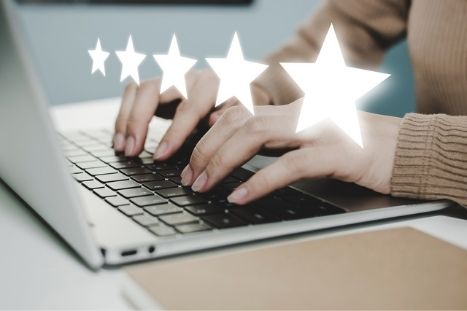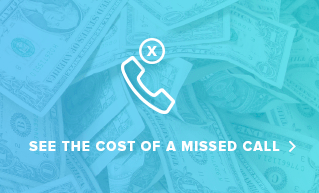 Attracting customers is one of the greatest challenges of owning a business. Building customer loyalty can be even more difficult. Offering great customer service is a start, but today’s savvy shoppers need more than just a good experience to keep coming back to your business. Winning people over is harder than it looks, but with a little strategy, you can increase customer loyalty in a way that feels organic and effortless.
Attracting customers is one of the greatest challenges of owning a business. Building customer loyalty can be even more difficult. Offering great customer service is a start, but today’s savvy shoppers need more than just a good experience to keep coming back to your business. Winning people over is harder than it looks, but with a little strategy, you can increase customer loyalty in a way that feels organic and effortless.
What is Customer Loyalty?
Just what is customer loyalty, exactly? It’s what happens when people give a company their repeat business over time. Whether you’re offering quality products, service, a great value, or all of the above, your business will effortlessly reap the benefits of such loyalty. This ultimately means you’ll have to spend less on customer retention and acquisition efforts.
Many of the most loyal customers even become brand enthusiasts, sharing their passion for your organization with their friends and family. This word of mouth marketing is invaluable. There are few strategies more effective than soliciting the help of long time customers in your efforts to spread the word about your business. Their passion for your brand is often contagious, and perceived to be more genuine than your average marketing campaign. Of course, to get such folks on board with spreading the gospel of your products and services, you’ve got to win them over time and time again. It’s easier said than done.
Why Customer Loyalty Matters
Loyal customers will return to your business repeatedly. That’s especially true if you’ve implemented any kind of customer rewards program. Suppose, for example, that your nail salon offers customers a free manicure after every five pedicures. People will return to the salon for every nail care service they need in the hopes of reaping the rewards. In addition, they may purchase goods and services they might not have otherwise gone out of their way to buy.
When attempting to understand why customer loyalty is important, it helps to put yourself in the shoes of your average customer. People are spoiled for choice these days; where you might once have competed with other local businesses, online shopping has upended the way we buy things. Conversely, scam websites and dropshippers have watered down the market significantly – you never really know what you’re buying online until it has arrived on your doorstep. With that in mind, it’s easy to see why customers would choose to return to a business time after time. Just one or two positive experiences with a brand can be enough to motivate folks to stay loyal.
Focus groups are another key benefit of building customer loyalty. Repeat customers are more likely to feel invested in the success of your business. They’re the ones who answer surveys and respond to social media posts soliciting customer feedback. They truly don’t mind spending time sharing their insights because they want you to succeed. That’s the true power of consumer loyalty.
Build a Customer Loyalty Program
Implementing a loyalty rewards program is a great way to increase customer loyalty. While some organizations experience a degree of loyalty without investing any extra effort, you can appeal to new customers and strengthen relationships with existing customers by creating a rewards program. Such a program can incentivize people to make purchases by offering free items and future discounts.
Studies show that 68 percent of people will join a rewards program when offered. Those who join the program will spend more with your company because of the rewards they reap in return. If they already enjoy buying from your organization, why not give people another reason to do so?
Many business owners are hesitant to implement these kinds of incentives, fearing it might cost too much without getting anything directly in return. While this might seem true when looking at an individual purchase, it’s important to see the forest for the trees. Loyalty programs frequently offer benefits that extend beyond a single transaction.
Customer retention is a primary benefit of such programs. When people are engaged, they’re more likely to stick around and continue spending money with your organization. While it’s easy to assume that folks will make purchasing decisions solely on price, shared values, engagement, and emotional connections with a particular brand all come into play.
Implement a Referral System
Knowing how to build customer loyalty often lies in understanding human behavior. But you don’t need a PhD in psychology to get into the heads of your customers. In fact, all it takes is a little reflection on the purchases you make in your own life to understand the motivations of your customers. At our core, human beings respond to incentives. That’s why referral systems can be so powerful.
Word of mouth referrals are the single most trusted form of advertising. Think back to the last major purchase you made. You likely consulted friends about their experiences and sought recommendations and advice. This premise is at the heart of every referral system.
Customer loyalty and retention is easy to build with such a system in place. Begin by setting goals; what do you hope to get out of a referral program? Beyond the obvious – building customer loyalty – what is your end goal? Whether you’re looking to grow sales, create more lifelong customers, or recruit more brand enthusiasts, the answer will help shape your program.
Next, define your message. If your referral program isn’t easy to understand and doable, customers aren’t likely to play ball. Clearly outline how the program works and what’s required to participate. Then select an incentive. Simply asking customers to refer you to their friends isn’t enough to motivate most people. Instead, consider offering a discount on products or services, or extend occasional freebies or special sales just for referral program members.
Strengthen Your Customer Experience
All the rewards and referral programs in the world won’t make up for a bad customer experience. People want to get invested in their local communities and are often eager to share recommendations with friends and family – so long as their experiences with your brand are actually good ones. The first step in fostering customer loyalty is to create meaningful customer service experiences that will inspire repeat visits.
This is a challenge even under the best of circumstances, but given the current labor shortage in play, it can be even more difficult to deliver the kind of service you dream of offering. After all, consistency in your products and customer service is what people come to expect. Many small business owners hoping to increase customer loyalty opt to partner with outsourced call answering services to build better customer relationships.
Maintain High Standards
Even if your products and services have been available for some time, their quality might not have remained as strong as when you first introduced them. Long time customers are sure to notice such drop offs in quality. In order to preserve customer loyalty, it’s important to deliver consistent experiences. By prioritizing high standards, you can avoid becoming that company with online reviews that say the formula changed or your product malfunctions more than it used to. Such reviews are bad for your professional reputation and may even discourage loyal customers from returning to your business.
Consistency is what helps your customers identify you from the competition. If you have to make changes to your products, think carefully about how those changes might impact your brand. By understanding what customers want and delivering it to them consistently, we forge the basis of customer loyalty. Even the slightest of changes can upend any goodwill you’ve built, so think twice before mixing things up.
That consistency should bleed over into every customer experience. Even your organization’s communications should strive to maintain a consistent voice, tone, and language. The reasons are two-fold; for one, this consistency can help build your brand and help you stand out against the competition. Consistent messaging also helps to build on customer expectations. By using specific language within your internal and external communications, you avoid confusing potential customers.
Rely on Outsourced Partners for Help
Many small business owners are turning to outsourced partners like those at MAP Communications for help implementing these customer loyalty strategies. Whether you’re struggling to hire quality staff, don’t have the budget for a full-time receptionist, or just need help in the interim, an answering service can help increase customer loyalty in surprising ways. Look no further than our testimonials section for insight into how we might improve your organization’s communication efforts.
When it comes to providing consistent brand experiences, MAP Communications is the solution. Our highly-trained virtual receptionists offer reliable, 24/7 support to businesses small and large. Whatever your vision for the future, allow the MAP team to help make it a reality. We’re currently offering a free week’s trial of our live answering service. If you’re curious about the ways in which an outsourced partner can help you win loyal customers, give MAP a try!




